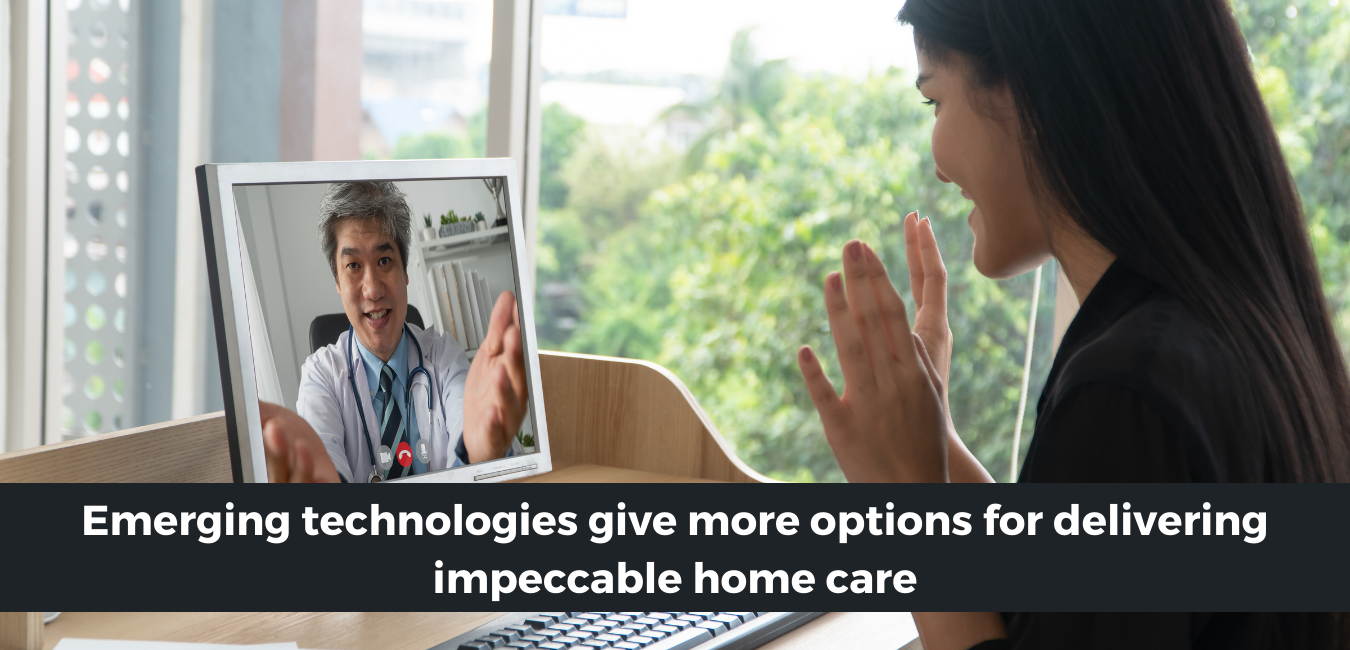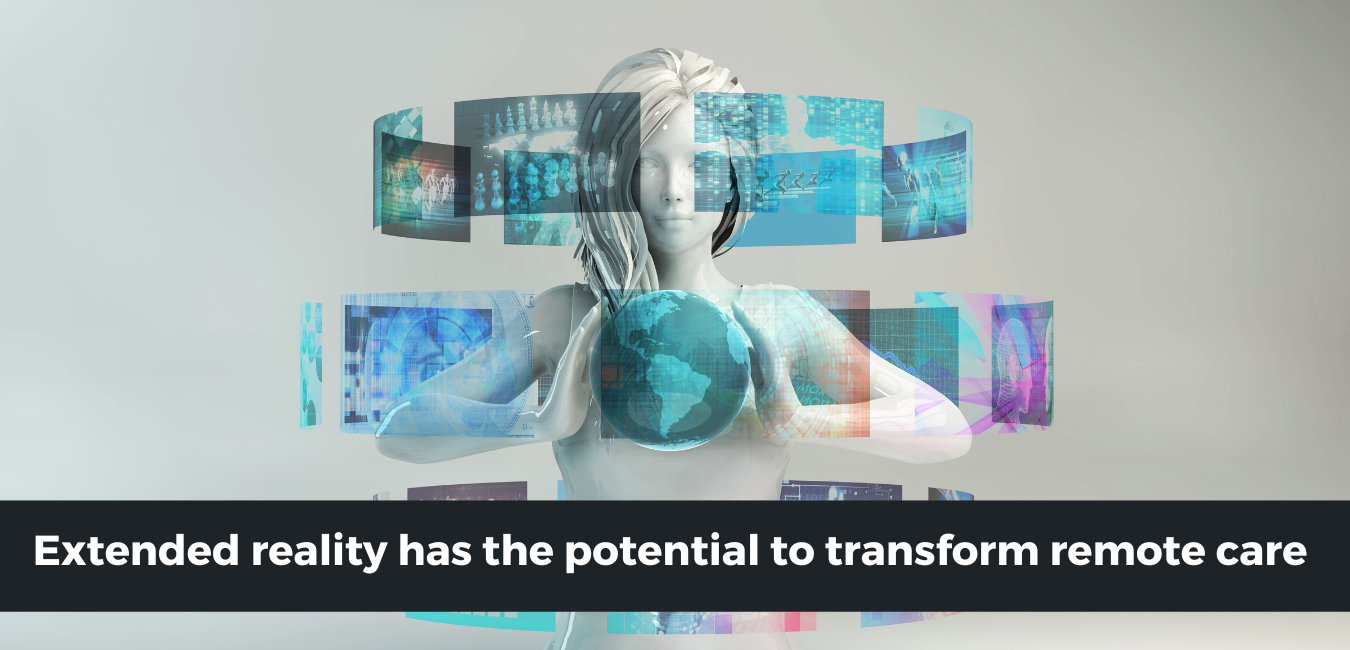Emerging technologies give more options for delivering impeccable home care

The pandemic altered our lives in many ways. However, we stood against this devastating time and began implementing solutions to stay afloat. But the elderly population was the most vulnerable population. The pandemic turned out to be even isolating, frightening, and excruciating.
Despite the challenges, ageing shouldn't feel like a burden. And what can make it a safe and happy transition? The answer is simple. Increase the role of technology. One needs to think about combining the traditional care offerings with the benefits of modern healthcare practices.
With the senior population increasing by multiple folds, better healthcare service offerings are becoming the need of the hour. New uses of these emerging technologies will give consumers and providers more options for delivering care. Clearly, home care will inevitably become the most viable way to keep such patients out of the hospital.
Here are some emerging technologies that will shape home care in the coming years. Let's begin!
Home care organizations are moving beyond the traditional setting
- IoT and IoMT
The world is becoming increasingly advanced. A lot of parts of our lives are getting automated and computerized. Everything around is designed for efficiency. It won't be wrong to say that IoT is already becoming an integral part of our lives. One of its subsets, IoMT, is changing the healthcare device service offerings. This allows the company to collect, monitor, and analyze data and share it for healthcare service offerings.
While it might be a little new, many believe that it will surpass $158 billion by the end of this year. And it is definitely at the heart of home healthcare. For instance, it is helpful in medication management, digital therapies, and creating feedback systems virtually. While it is still the beginning, it will definitely become imperative to grow as an organization.
But it is still a broad term used by companies which encompass different technologies. Let's break down a few and show how helpful they are.
- Telehealth technology
This isn't anything new. But with the workforce shortage and increasing demand for instant care offerings, this technology can turn out to be a saviour. Telehealth services allow the timely sharing of data and enable better intervention in terms of diagnostics and care.
In other words, this technology allows the patients to connect through their computers, tablets, and smartphones. It will be a cost-effective way to get access to quality care.
- Remote patient monitoring:
It includes wearable devices and anything that allows access through portable or mobile technology. It helps patients and clinicians to manage conditions like diabetes, CHF, and COPD. So, the patients won't have to visit the doctor's clinics and get the necessary care virtually. In fact, many believe that home care agencies can use the power of Ai to automate their manual tasks around recording, reporting, and observing.
- IoMT devices
There are so many devices available now to help at-risk patients stay safer in their home environments. In this case, the agencies can use electronic sensors and cloud-based technologies to monitor activities and alert the caregivers if there happens to be any risky behaviour. For instance, it could include the following:
- Medication dispensers
- Wearable devices to monitor daily activities
- Smart appliances to monitor usage
- GPS trackers for patients with Alzheimer's
- EMR technology
EMR has been around for a long time now. But with emerging technologies, it continues to evolve. Thus, one can expect such technology's more interactive, reliable, and responsive nature. This is why you must opt for EMR that is in sync with the new technologies. Let's be honest here. EMR interoperability is the need of the hour. It helps with coordinated patient care, better medication assessment, faster medical billings, and reduced readmissions.
- EVV technology
It is a type of technology that helps the providers get electronically verified. It's even important now since the service providers need to be confirmed depending on their service type. Every state has their own EVV model. So, make sure you are compliant with the rules.
Besides this, camera systems and social interactions are also technologically-inclined. The technology is helping with connectedness and home-based care. Thus, helping home care agencies:
- To reduce the number of hospitals and readmissions
- To reduce overall costs.
- To reduce mortality rates
- To improve patient engagement and overall satisfaction
- To help patients, caregivers and other people involved
Healthcare technology is on the rise
Many say that seniors might not be comfortable with technology. But seniors consistently demonstrate that they can leverage the technology to maintain their health. They are adopting a digital mindset quite quickly. In fact, according to the data available, older adults aren't any longer offended by sharing their data from different wearable or apps.
Clearly, the care delivery will expand beyond the hospital's four walls and soon come into the patient's home. Its ability to manage the different needs of the seniors will make it an even more integral part of healthcare needs.
Technology will bridge the gap between clinical settings and home care services. Thus, allowing the agencies to optimize resources, staff responsibilities, and patient safety. Hence, one can achieve tailored services like that.
Final Takeaways: The Future of Homecare Relies on Technology
The pandemic added a lot of complications to the healthcare service industry. In fact, it brought the abnormalities of the healthcare service provider to the forefront. That's how the use of technology has snowballed in the past few years. That's how it could help with personalized care.
After all, the future of healthcare relies on technology now. Embracing the digital lifestyle isn't a luxury anymore. Instead, it is more like a dire need that empowers seniors to stay connected and healthy with confidence.
However, when it comes to technology, you must identify the factors that might be risky to move forward without putting the safety of patients on the line. The use of technology must provide accessible, quality care with cost benefits.
Digitization of home care services will improve the offerings from the consumer's standpoint. At the same time, it will also improve the care offerings and revenue. So, are you using it right or still wondering.










